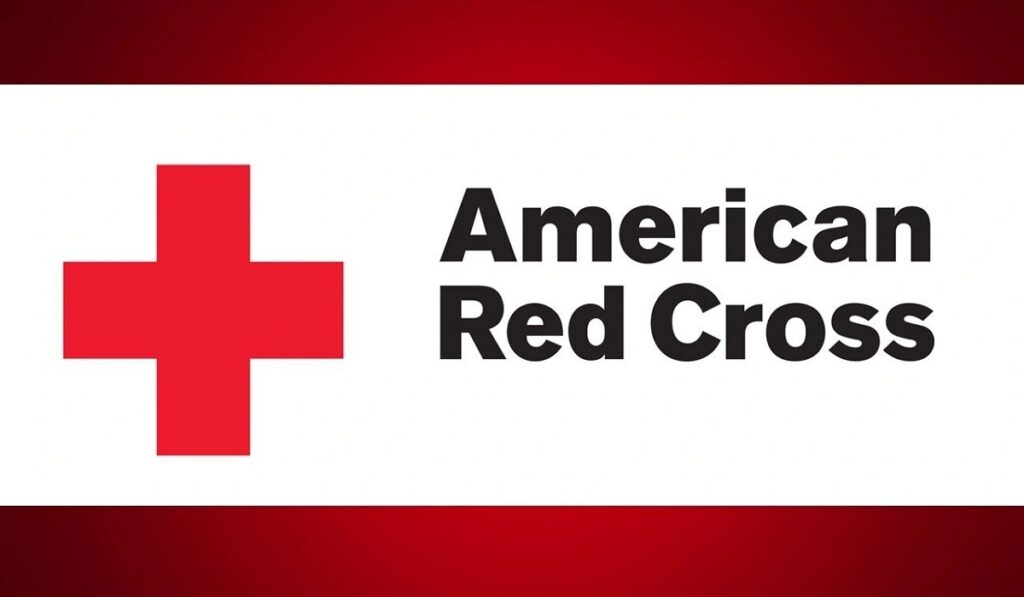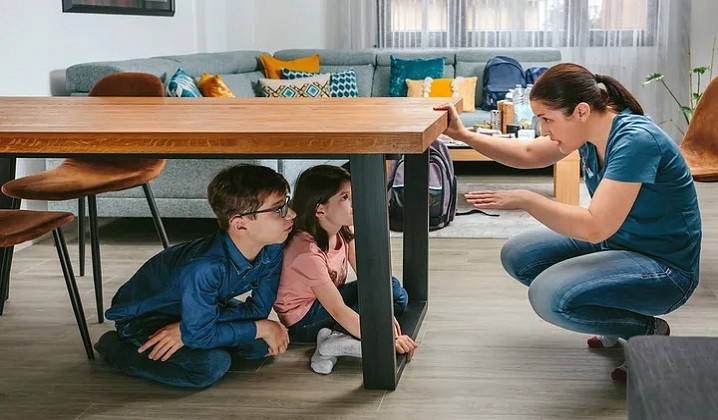Recent earthquakes in Turkey and Syria show that it’s never too early to get ready for one. The simple steps you take now will help protect you and your family when the next round of shaking starts. They will also keep everyone safe in case of aftershocks, emergencies, or a bigger disaster.
Find a safe spot
As part of preparing for an earthquake, go through each room and figure out where to go when the ground starts to shake. Contrary to what most people think, the closest doorway is not the safest place because you could get hit by a swinging door, broken glass, or falling objects.
It’s safer to take refuge in a room’s interior, far from any glass, shelves, or dangling decorations that could break or fall. Casey Brennan, senior director of social impact and advocacy at AAA Northern California, Nevada, and Utah, says that if you can, you should take cover under strong furniture like a solid wood or metal table.
Don’t move to a different room or run outside. You’ll probably put yourself in more danger. One of the most dangerous places to be is right next to a building, because things fall off of them all the time. Think about the fact that some earthquakes are so strong that you might not be able to walk or even crawl. If you’re in bed, don’t move. Instead, roll over onto your stomach and put a pillow over your head and neck to protect yourself.
Keep a bag with hard-soled shoes, a flashlight with extra batteries, work gloves, and a whistle fastened to the bottom of the bed. (These useful things might also come in handy in other kinds of emergencies.)
Margaret Vinci, who runs earthquake programs at the Seismological Laboratory at the California Institute of Technology in Pasadena, says that the first thing to do after an earthquake is to put on shoes (to avoid cutting your feet or other injuries) and clothes to stay safe.
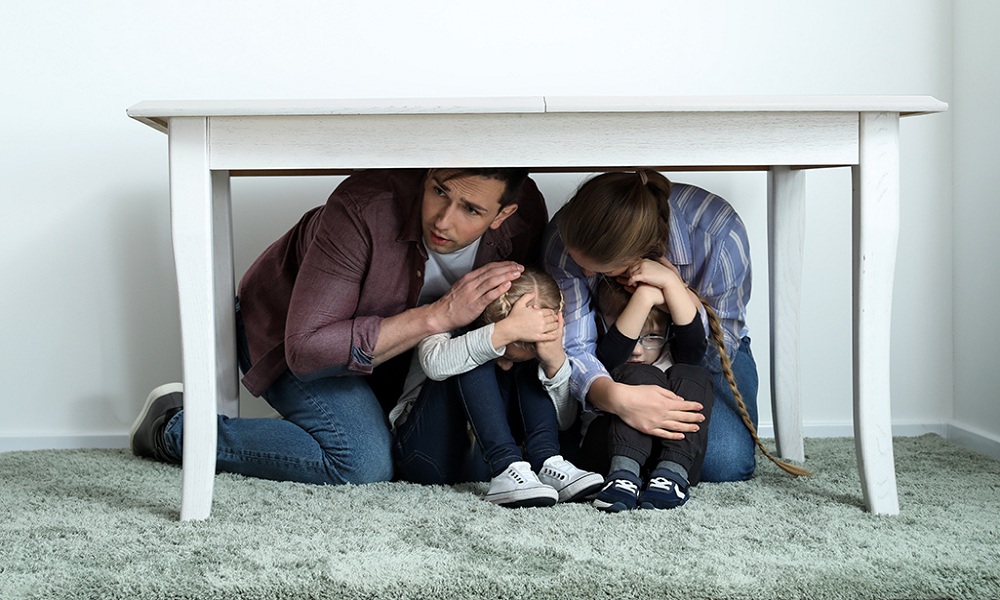
Practice “drop, cover, and hold on”
This important safety measure is exactly what it says it is: Wherever you are, get down on your hands and knees and pull your head toward your legs. Cover your head and neck with one hand to protect them from falling things as you crawl to safety, preferably under a strong piece of furniture. With one hand, hold on to the furniture, and with the other, cover your head and neck.
Even after the first wave of shaking stops, there are still risks. Aftershocks can happen right away, in a few minutes, or even days later. Vinci advises to stay in your safe place until the shaking stops and you feel safe to move, but watch out for things that might fall after the shaking stops or during aftershocks.
At least once a year, do the Drop, Cover, and Hold On drill with your family. If you’d like a reminder, mark your calendar for the Great ShakeOut in October, when millions of people around the world take part in earthquake safety drills.
The more you practice and get to know your safe places, the more your body will take you there before you even think about it.
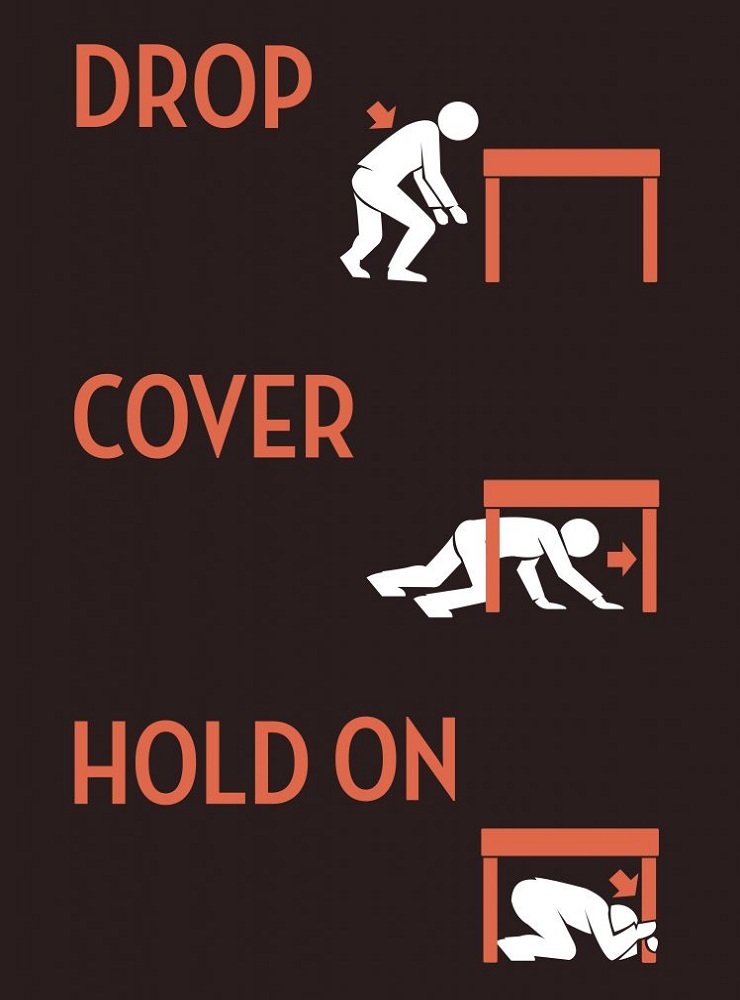
Get everyone involved in your drills
If you live with other people, like kids, parents, friends, or roommates, make sure they know how to stay safe during an earthquake. Tell them why you are doing the drill. Be honest without making false alarms: Earthquakes can be scary and dangerous, but one way we can protect ourselves is by doing drills.
During the Ridgecrest quake, adults were hurt trying to get to their children as they ran down hallways. Tell older kids to stay in bed until Mom and Dad come to get them after the shaking.
Keep TVs, cabinets, and other things that could fall away from exterior walls and windows, as well as beds and cribs with wheels that are locked. This will protect people who can’t move themselves to safety. Vinci advices not to put anything above the bed or on the dressers that could fly across the room. Everything heavy should be put down low.
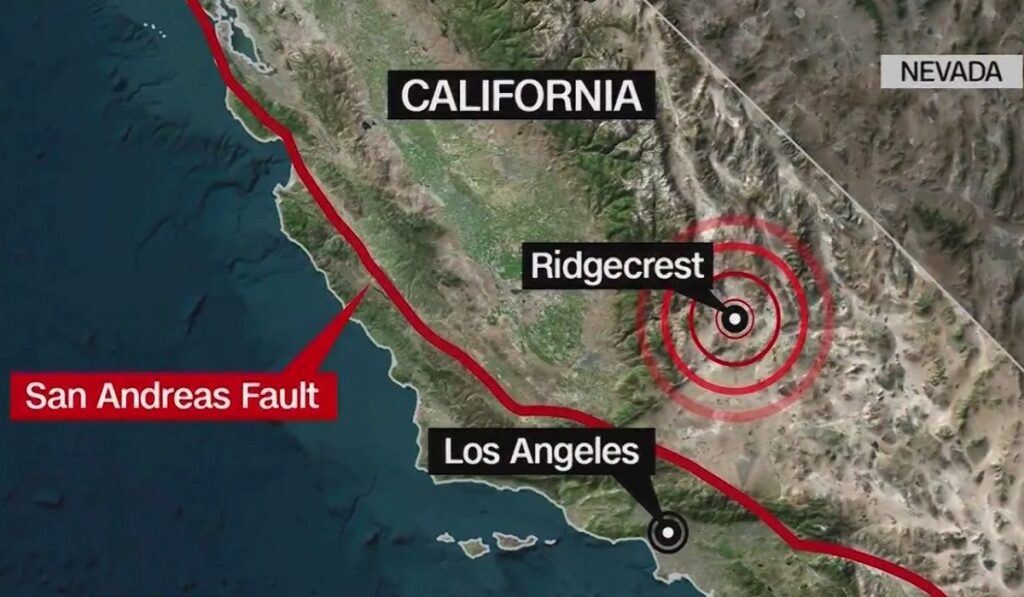
Choose a meeting place
Plan where and when to meet up after the shaking stops, since you might not all be together when an earthquake hits. For example, if there are no immediate dangers nearby, you could meet in the driveway of your home. In general, it’s best to stay away from power lines, tall trees, and brick buildings. Set a time for when everyone is expected to be there. If the meeting time has passed and you can’t find or get in touch with a family member, call the police and ask for help.
Talk to your kids about what to do if an earthquake hits while they are at school and you are at work. Vinci said that they should know that they have to stay at school until Mom, Dad, or someone else comes to get them. But they should also know that if their parents work far away, it could be hours or even longer.
Parents with long commutes can ask friends or neighbors who live closer to school to pick up their kids in case of an emergency. These details should be worked out ahead of time and put in your child’s file at school and your family’s communication plan at home.
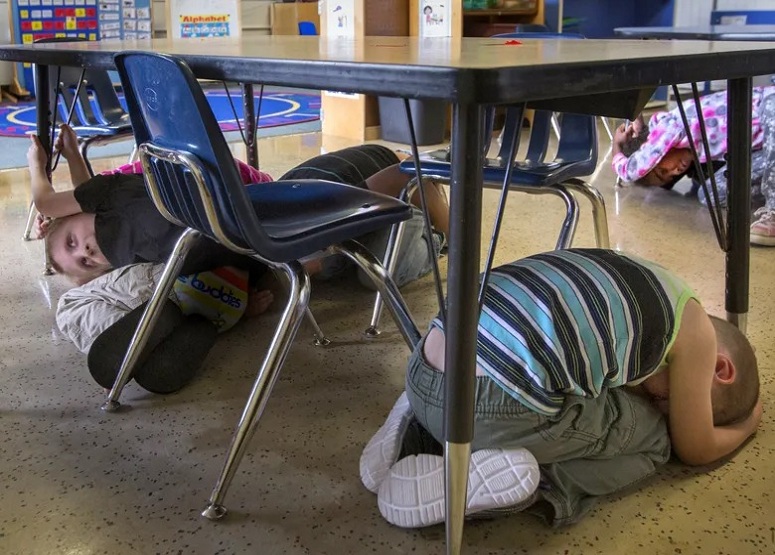
Make a plan for communicating
Make a list of emergency numbers, like those for the local police, fire department, and other services, and keep it in your cell phone and, if you have a landline, near it. Also, make a list of everyone in your family’s contact information and make sure everyone can see it. On the family list, there should be the number of a friend or family member who lives out of town or out of state and may be better able to receive and pass on messages.
Keep calls as short as possible after an earthquake so you don’t overburden already busy cellular networks and run down your phone’s battery. A text message is often faster and more likely to reach the person you want to talk to. If you have access to the internet, you can also use email and social media to find and/or talk to family members.
Save the battery life on your cell phone by turning down the brightness of the screen and, if possible, turning on low power mode. As a backup, you could buy a satellite phone or messenger (a device that lets you send text messages via satellite) and keep it somewhere easy to get to in case your cell service goes out.
In case of an emergency, all cities and counties in the U.S. have emergency and reverse-911 numbers that send automatic alerts to your cell phone. You can sign up for these services through Smart911.com and other apps and websites. Keep in mind, though, that cell phone service may be down after an earthquake, so it’s important to have a plan B for getting in touch.
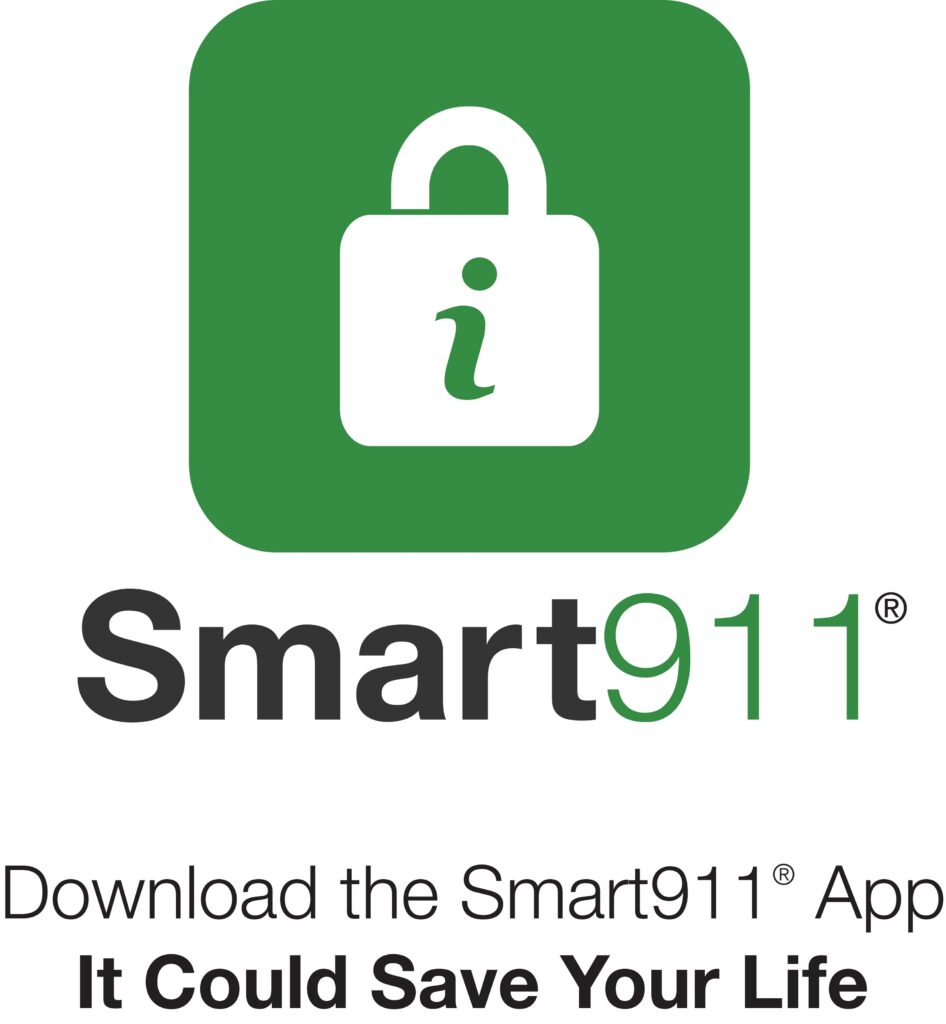
Put together kits to help you be ready for an earthquake
You should have more than one kit, yes. You should have one at home, one at work, and one in the trunk of your car. (Some schools in areas where earthquakes are common require students to keep a kit in the classroom or store emergency supplies on the school grounds. If not, your child could keep a small bag in his or her desk or locker.
Earthquake kits should have tools like a flashlight, a battery-powered radio, and a whistle to call for help, as well as first-aid items like antibiotic ointment, bandages, pain relievers, prescription medications and glasses, and splinting materials. Kits should also have at least three days’ worth of nonperishable food and water. The general rule is that each person needs one gallon of water per day to drink and clean.
Items should be kept in airtight containers and then put in a larger, easy-to-carry container, like a backpack. At least once a year, go through your earthquake kits and replace anything that’s gone bad or makes changes to fit your family’s changing needs.
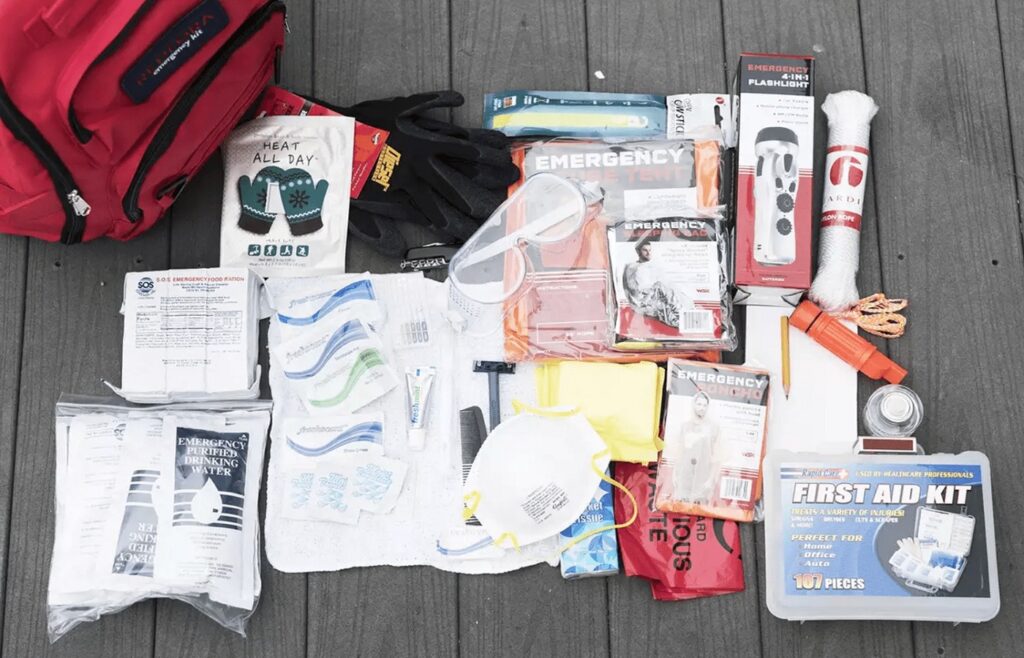
Don’t forget to prepare for your pet(s)
The Humane Society says that your pet(s)’ emergency kit should have enough food and water for at least five days. Remember to bring a leash, a harness, and a carrier to keep your pet safe and stop it from running away. You should also bring a litter box and/or bags to pick up waste. Medicines and medical supplies should be kept in a container that is waterproof.
A pet first-aid kit with things like gauze, a muzzle, a digital thermometer, and hydrogen peroxide is also a good idea. Keep pictures of your pet(s) in your kit to help you find them if they get lost and to prove that they belong to you when you find them.
Note that pets are usually not allowed in emergency shelters. Ask a friend or family member ahead of time if they would be willing to take your pet(s) if something bad happened. Keep their contact information in the emergency kit you have for your pet.
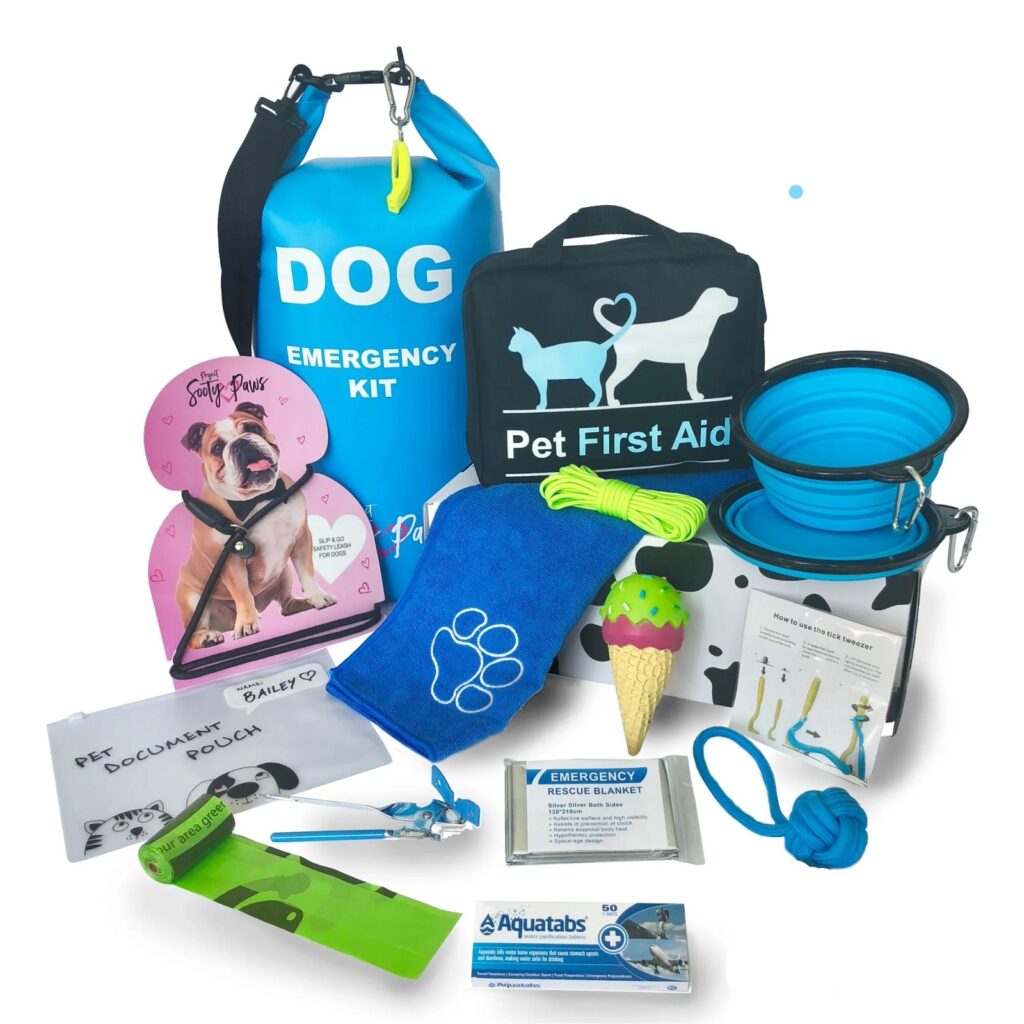
Find another place to stay
If your house can’t be lived in or you can’t get to it after an earthquake, you’ll need to find another place to sleep. You could go to a friend, family member, neighbor, or emergency shelter that is run by the community.
Gary Reid, who used to work for AAA as an insurance operations and specialty product manager, says, “Alliances are very important.” You should have a plan for your neighborhood or community as well as a plan for your family. Call your local emergency management office to find out if one is already set up in your area. If not, Map Your Neighborhood (called Neighborfest in the Bay Area), a national organization that helps communities get ready for disasters, can help you start a neighborhood program.
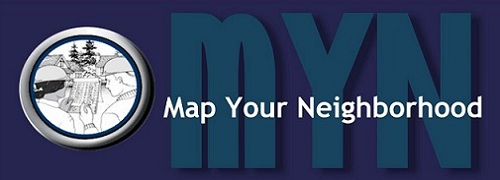
Keep gas in the car and cash on hand
Some everyday services may not be available after a big earthquake. Always keeping your car’s gas tank at least half full is a good idea. Not only will you be ready for an emergency, but you won’t run out of gas.
Estimate how much cash you’d need to cover the basics for a week and put that amount in small bills (ones, fives, and tens) in a safe place near your emergency kit.
Learn CPR and other safety skills
In an emergency, your training could help save lives. The American Red Cross has short classes on CPR and first aid that only take a few hours to finish. Community Emergency Response Team is a national program that teaches volunteers how to be ready for disasters. They learn about things like fire safety, light search and rescue, and emergency medical operations.
